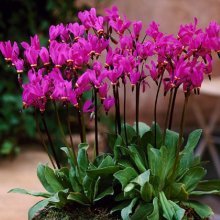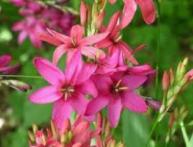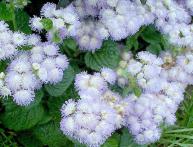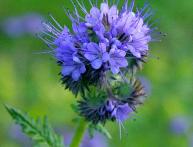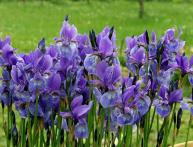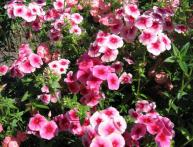Dodecatheon: features of plant care and planting
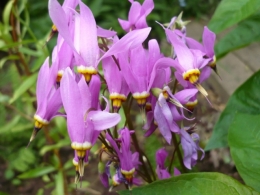
Goose color, or dodecatheon, is perennial a plant with an unusually beautiful color. It is unpretentious in planting and care, but will require some knowledge from the gardener. Today, more than 30 species of dodecatheon are known, but unfortunately, not all take root here due to climatic conditions.
Content:
- Distinctive features of the plant
- Beautiful dodecatheon: features of planting and care
- Using plants in landscape design
Distinctive features of the plant
North America is considered the birthplace of the goose color. As noted above, botanists count about 30 plant species, but we cannot see even half of them due to climatic conditions. Most often, dodecatheon can be found in mountainous forested areas. This unusual arrangement of the plant indicates:
- goose color endurance
- resistance to sudden temperature changes
- resistance to any vagaries of weather (for example, showers, strong winds and even the first, minor frosts)
Our country is located in the middle zone, so the plant feels just fine: it quickly takes root, gives the first color and blooms profusely. Note that the goose flower grows in the form of a basal rosette. It has a fairly long, green trunk, on which a flower cup is formed during the growing season.
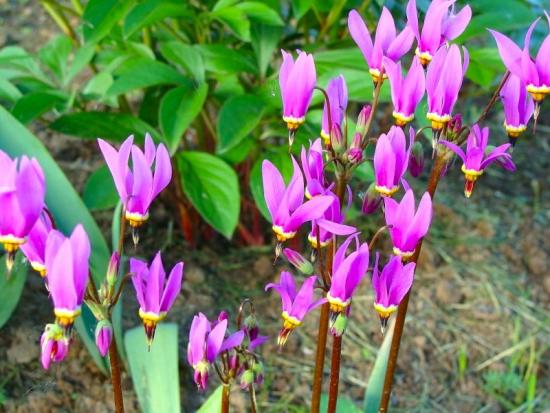
Dodecatheon flowers are small in size and rarely exceed 3 centimeters. As the petals of the plant bloom, they completely reveal the golden dust particles and move back.So unusual bloom attracts invertebrates. Dodecatheon is a beautiful type of honey plant. In botanical textbooks, the scientific name for goose color is “pretty dodecatheon.”
This name cannot be refuted or disputed, because the plant is truly famous for its unusual and original appearance. Today the flower can be found not only in gardens, but also in parks and squares.
So, dodecatheon is a perennial plant that has light green leaves. The flower is unpretentious in planting and care, and can easily tolerate any “whims” of our climatic conditions. Very often, goose color is used in decorating parks, squares, and gardens.
Beautiful dodecatheon: features of planting and care
It should be noted that the whole essence of caring for this ornamental plant comes down to timely and competent seating arrangement. It is better to start the planting procedure in a warm period of time, but it is necessary to take into account that the flowers must be at rest.
Recognizing a “resting state” is very simple. During this period, the plant stops blooming, its foliage will begin to “die off” and prepare for winter hibernation. Most often, dodecatheonoma's state of dormancy occurs at the end of summer (very rarely at the beginning of autumn). How to start planting:
First, prepare a place for transplantation. The soil needs to be thoroughly fertilized and dug up using a fork or shovel. The holes for transplantation should not exceed a depth of 6-8 centimeters. Focus on the rhizomes of the plant. The larger they are, the deeper and wider the diameter of the hole.
Video about this plant:
Water holes with water. Follow the rule - it is better to underfill than to overfill. Dodecatheon, although it loves moisture, is moderate.Start planting goose flowers. Stick the root firmly into the soil and cover with soil.
After flowering, the dodecatheonomum has very beautiful peduncles. If you want to increase the area of goose blossom next year, we recommend collecting the seeds now. After collecting the seeds, it is better to trim the flower stalks using ordinary scissors.
The collected seeds need to be dried, but make sure that direct sunlight does not fall on the seed. When the seeds completely “give up” their moisture, collect them in a jar or paper box and place them in a dark, dry place.
Care Tips:
- The plant needs to be watered every 3-4 days. It is preferable to perform “bath procedures” after sunset.
- Dodecatheon is a shade-loving plant. Areas that are protected by the shelter of trees are ideal for planting.
- Fertilizers are best applied in mid-autumn. It is very important to get ahead of the first frost.
- After flowering, it is better to cut off the flower stalks immediately. They do not benefit the plant and only take away nutrients.
Goose blossom is a perennial plant, after active growth and flowering, roots continue their “life activity”. They cope well with our severe frosts, and there is no need to insulate them. Very often, inexperienced gardeners cover areas with plants with greenhouse film, thereby causing a “greenhouse effect.” As a result, the plant died.
As you can see, caring for and propagating this amazing plant is not at all difficult. It is important to start replanting in time, fertilize and water with dodecatheon, and it will certainly give the owner beautiful and long flowering.
Using plants in landscape design
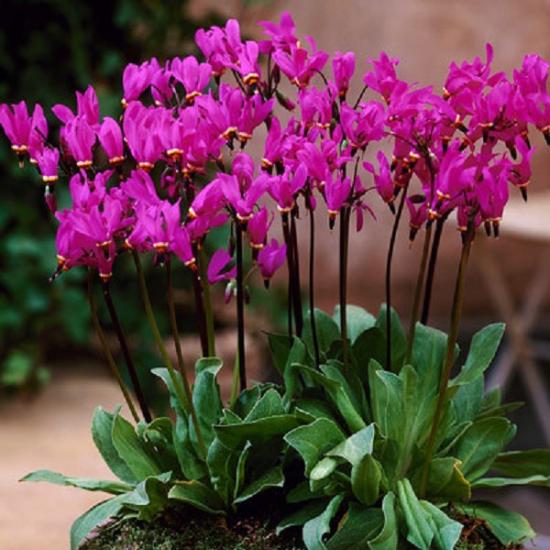
It should be noted that dodecatheon is widely used in landscape design.Goose blossom is famous for its refined and elegant appearance, and even in single compositions it is impossible to take your eyes off the plant.
The plant looks very advantageous when creating alpine mountains and rockeries. Most often, flowers are planted against the backdrop of low-growing coniferous trees. Interestingly, the goose color is also combined with the drooping microbiota. Creating a truly bright and unusual landscape composition.
Why is it beneficial to use dodecatheon in landscape design?
- Long flowering
- Unusual type of flower (“curved” flowering)
- Easy to care for
- Possibility of rapid reproduction
Dodecatheon is a truly beautiful and unusual plant of the Primrose family. Plant lovers have fallen in love with the goose flower, primarily for its attractive appearance and unpretentiousness in care. Anyone who wants to add long-lasting and long-lasting flowering to their garden should get acquainted with dodecatheon, and who knows, perhaps this particular plant will become a favorite in your home front garden. Flower mood!


